I. Project Overview
Shunchang County is located in the northwest of Fujian province and situated in the south of Wuyi Mountain and in the middle of the Min River. It is a subtropical maritime monsoon climate, characterized by a moderate climate, abundant rainfall and fertile mountain soil, making it very suitable for edible mushrooms growth.
Despite its suitability for edible mushroom growth, Shunchang County faced challenges. The tension between mushroom production and forest conservation became evident, and traditional mushroom cultivation methods proved costly.
In 2000, to make rational use of land resources, Shunchang County introduced Juncao technology, which could using grasses instead of using woods and bamboo for cultivation of edible mushrooms.
In 2020, Shunchang County brought in Prof. Lin’ s team of China National EngineeringResearch Center of Juncao Technology from FAFU. After concerted efforts, Shunchang Countygained its own experience in the circular production involving plants, mushrooms and animals.At the same time, the local government actively builds a platform for farmers to increase their income by participating in contracted greenhouse operations, cultivating edible fungi, and working in enterprises. Enterprises and cooperatives provide services and technical support.
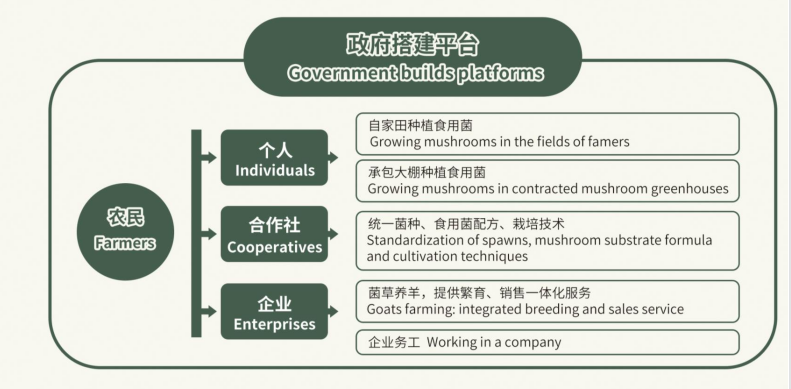
The development model of mushroom and grass industry in Shunchang County
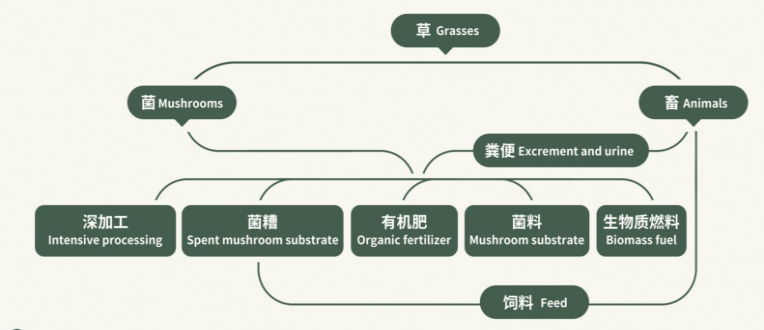
The circular production involving plants, mushrooms and animals
II. Approaches and Methodology
(1) Implement pilot project to interplant Giant Juncao grass with crops
Shunchang implemented pilot project to interplant Giant Juncao grass with crops like broad beans and potatoes,etc, which has significantly increased the yield and output value per mu.
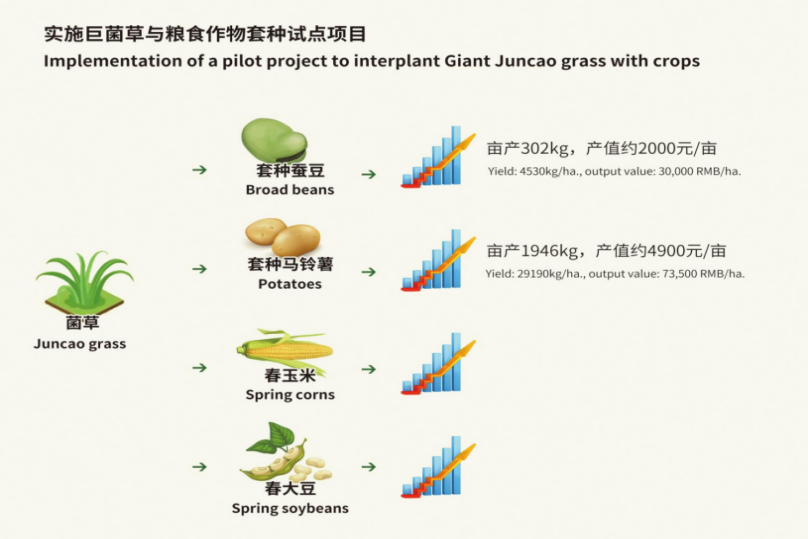
Economic benefits of intercropping pilot projects
(2) Using grass as feed and relying on animal husbandry to enable circular production
Juncao grass grows very fast, with high yield, adequate nutrition and good taste, and can beused directly as feed for livestock and poultry. Firstly, family farms, agricultural cooperatives andenterprises are encouraged to plant Juncao grass and process it into silage to feed chickens.ducks, geese, sheep, pigs and other animals. And then the animal manure and biogas slurry areapplied for Juncao grass planting, enabling circular production of plants and animals.Currently, if each family raises 20 ewes, they can earn up to 80,000-100,000RMB a year.
Secondly, the fodder is processed and distributed to livestock farms outside Shunchang County, local enterprises has introduced production lines of com- pound silage feed and grass carp feed and supplied them to dairy, ostrich and goat breeding enterprises in other parts of the country. The company's bio-fermented feeds are recognized by the market for their low cost and high quality.

Using Juncao grasses and mushroom substrates as fodder can reduce breeding costs
(3) Utilizing the characteristics of Juncao to reduce production costs
To eliminate bottlenecks in mushroom industry development and further“reduce costs and in-crease efficiency”and promote technological upgrading of mushroom cultivation and production, Shunchang County uses Giant Juncao grass, which is rich in cellulose, crude protein andsugar, to replace some of the raw materials such as cottonseed hulls and corn cobs, effectively reducing the cost of mushroom production while improving its yield and quality, making the relatedproducts highly marketable.
III. Beneficiary Description
In Shunchang, Zhengfang Town, Xingyuan Village, Zhengfang Village, Fengke Village, and Luofang Villagetook the characteristic industry of edible mushrooms as a breakthrough point and joined together to build a demonstration base for the development of Juncao industry.
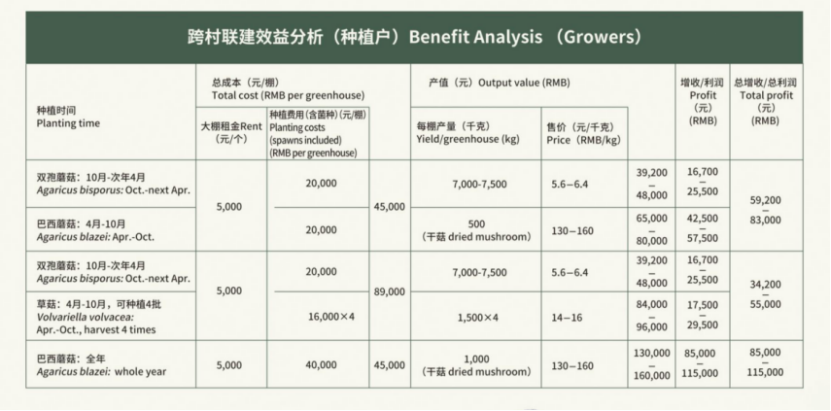
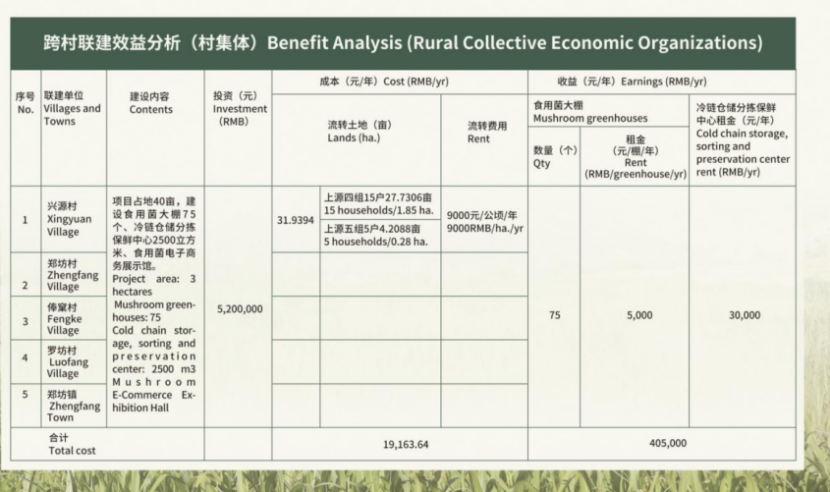
Economic benefits ofparticipating in the cross-village joint construction
At present, 35 households have been involved in contract farming, and the average household in come has in creased by about 45,000 RMB. More than 200 villagers were employed at their hometown. Based on a wage of 120-500 RMB/person/day, the annual income increase per capita is 30,000 RMB.

